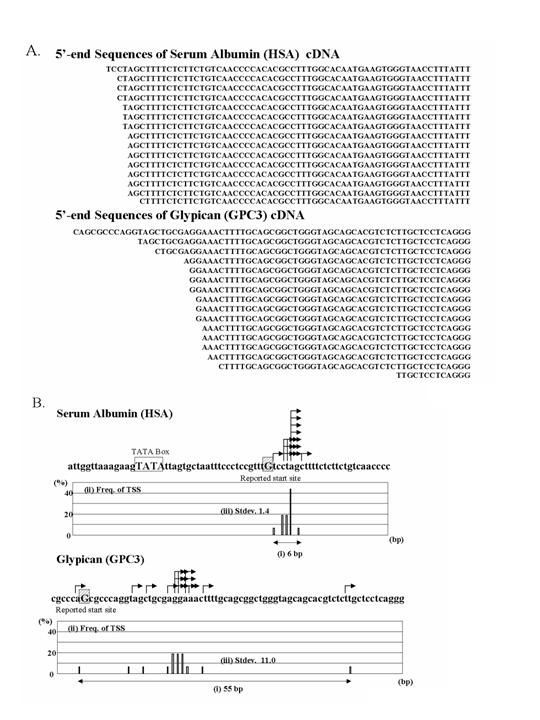 |
 |
 |
 |
Detailed analysis of the 5'-ends of full-length cDNAs
revealed that the exact mRNA start sites are scattered over a relatively
wide region for most of the human genes. Although in vitro experiments
using cell free system and viral promoters (e.g. adenovirus major
late promoter) observed that the diverse transcriptional initiation
occurs especially when the canonical TATA box is lacking from the
promoter, there has been no report showing whether such a diverse
initiation event is actually occurring in human cells at the genome-wide
level in vivo. In most cases, the transcription start sites have
been regarded as "regions" rather than as static "positions". Previous
reports have usually described only one or at most a few transcription
start sites for each gene (also visit Eukaryotic Promoter Database,
which collects the previously reported transcription start sites,
at http://www.epd.isb-sib.ch; Perier et al., 2000). Even if a gene
has multiple start sites, most of them have been overlooked. The
distribution of the mRNA start sites should reflect the dynamic
nature of the transcriptional initiation events in vivo. Precise
information about the position and the frequency of the initial
nucleotide of the transcription presented in this study should lay
the groundwork for elucidating the biophysical principles that govern
transcription initiation.

|
 |
 |
 |
 |
|